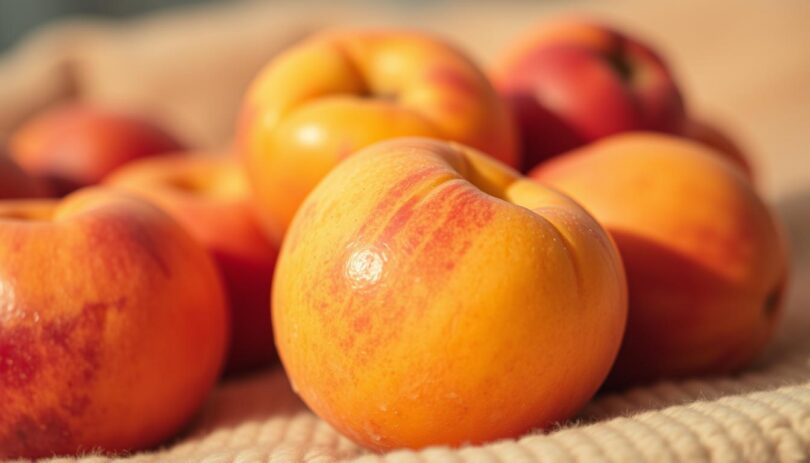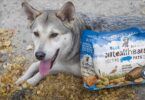What if a juicy summer treat could do more harm than good for your furry friend? Many pet owners wonder about sharing seasonal fruits with their companions. This guide explores the safety, benefits, and precautions of feeding these sweet stone fruits to four-legged family members.
These vitamin-rich fruits contain fiber and antioxidants that support digestive health. However, their pits harbor toxic compounds that require careful removal. Proper preparation transforms this human snack into an occasional reward for pets.
Moderation proves crucial when introducing new foods. Overfeeding may lead to stomach discomfort despite nutritional advantages. Understanding portion sizes and preparation methods helps prevent avoidable health issues.
This article breaks down essential safety measures, nutritional highlights, and serving suggestions. Discover how to balance taste and wellness while keeping tails wagging safely. Let’s explore smart ways to share nature’s candy with your loyal companion.
Understanding the Nutritional Value of Nectarines for Dogs
Nectarines offer a nutrient-rich profile that supports canine health when prepared correctly. These fruits contain vitamins A and C, along with magnesium and potassium, which work together to boost immune function and muscle performance. Their natural fiber and antioxidants add extra benefits for digestive and skin health.
Vitamins and Minerals Spotlight
Vitamin A maintains eye health and skin integrity in pets. Vitamin C acts as an immune booster, helping dogs fight infections. Magnesium supports nerve signaling, while potassium ensures proper heart rhythm and muscle contractions.
The Role of Fiber and Antioxidants
The fiber content aids digestion by regulating stool consistency and gut motility. Antioxidants like beta-carotene neutralize harmful free radicals, promoting a glossy coat. Studies suggest these nutrients may also reduce age-related cellular damage in animals.
Can Dogs Have Nectarines? Exploring Safety and Risks
The juicy appeal of nectarines masks critical safety steps for four-legged companions. While the fleshy part offers nutrients, hidden dangers demand careful handling to prevent health complications.
Pit Removal and Toxicity Concerns
Stone fruit pits contain amygdalin, a compound that releases cyanide when chewed. Though small amounts rarely cause immediate harm, repeated exposure can lead to toxic buildup. The hard pit also presents physical dangers – its size creates choking hazards and risks intestinal blockages if swallowed.
Veterinarians recommend cutting fruit away from the center stone completely. Dispose of pits securely where curious noses can’t reach them. Immediate vet care becomes essential if accidental ingestion occurs.
Balancing Sugar Content and Digestive Health
Natural sugars in nectarines pose challenges for sensitive stomachs. Overfeeding may trigger diarrhea or vomiting, particularly in smaller breeds. Pets with diabetes or weight conditions require strict portion control due to the fruit’s glycemic impact.
Fiber content offers benefits but demands moderation. Introduce sliced flesh gradually, watching for stool changes. A good rule: treats shouldn’t exceed 10% of daily calories. Always consult your vet before adding new foods to specialized diets.
Guidelines for Safely Introducing Nectarines into Your Dog’s Diet
Sharing human foods with four-legged companions requires careful planning to balance enjoyment and safety. Follow these actionable steps to transform this summer fruit into a risk-free snack that aligns with your pet’s nutritional needs.
Effective Preparation Techniques
Start by rinsing the fruit under cool water to remove dirt and pesticide residues. Slice around the pit in a circular motion, discarding the toxic center entirely. Cut the flesh into pea-sized pieces to prevent choking, especially for smaller breeds.
Portion Control According to Dog Size
Adjust serving sizes based on your pup’s weight. Toy breeds should receive no more than 1-2 bites, while larger dogs can handle a tablespoon-sized portion. Always introduce new foods gradually, mixing small amounts into their regular diet to monitor reactions.
Consult your veterinarian before adding nectarines to meals, particularly for pets with health conditions. Treats should complement—not replace—balanced nutrition. Store uneaten portions in the fridge for up to two days to maintain freshness.
Identifying Potential Risks When Feeding Fruits to Dogs
While fruits offer valuable vitamins, their overconsumption can disrupt pet health. Even nutrient-dense options like peaches and nectarines require strict portion control to avoid adverse reactions. Recognizing early warning signs helps owners balance treats with safety.
Symptoms of Overindulgence and Digestive Upset
Excessive fruit intake often triggers stomach upset, diarrhea, or vomiting within hours. Pets may show lethargy or reduced appetite as their bodies process unexpected sugars and fiber. Smaller breeds face higher risks due to faster metabolic impacts.
Peaches share similar nutritional profiles with nectarines but contain slightly more natural sugars. Both provide vitamin C and antioxidants, yet their pits and skins pose identical choking hazards. Moderation remains key—even beneficial nutrients become problematic in large quantities.
Introduce new fruits slowly, watching for stool changes or itching. Veterinary experts recommend waiting 48 hours between trials to pinpoint causes of digestive issues. Pair small portions with regular meals to ease absorption.
Always consult your vet before adjusting diets, especially for pets with existing conditions. Track treat frequency using a food journal to maintain healthy limits. Remember: treats should enhance nutrition, not replace balanced meals.
Incorporating Other Nutritious Foods in Your Dog’s Diet
Diverse food choices transform meals from routine to nutrient-rich experiences for pets. While nectarines offer specific benefits, combining them with other safe fruits and vegetables creates balanced nutrition. Variety helps address different health needs while keeping tails wagging at mealtime.
Smart Pairings for Optimal Health
Blueberries pack antioxidants that support cognitive function, while carrots promote dental health through natural scrubbing action. Green beans serve as low-calorie crunch treats rich in iron. Pumpkin puree aids digestion with soluble fiber, particularly helpful for sensitive stomachs.
Rotating these options prevents dietary boredom and ensures a wider range of vitamins. The beta-carotene in sweet potatoes enhances skin and coat condition, working synergistically with nutrients from nectarines. Always remove seeds, stems, and inedible peels before serving.
Veterinarians suggest introducing one new food every 3-4 days to monitor reactions. This gradual approach helps identify allergies or digestive conditions early. Pair small portions with regular meals to maintain energy balance and nutrient absorption.
Consult your vet about ideal food combinations based on breed, age, and health status. A well-rounded diet using multiple sources reduces reliance on any single ingredient. This strategy minimizes gastrointestinal upset while maximizing nutritional coverage for lifelong wellness.
Final Take on Adding Nectarines to Your Dog’s Diet
Smart pet nutrition balances rewards with safety measures. When prepared thoughtfully, this summer fruit delivers vitamins A and C alongside gut-friendly fiber. Antioxidants support skin health while magnesium aids muscle function.
Always remove the toxic pit first—its cyanide content and choking risks outweigh any benefits. Cut flesh into tiny pieces matching your pup’s size. Start with thumbnail-sized portions to avoid sugar-related stomach upset.
Consult your veterinarian before introducing new foods, especially for pets with dietary sensitivities. Treats like sliced nectarines should complement high-quality kibble, not replace meals. Pair them with blueberries or carrots for varied nutrition.
Watch for changes in energy levels or digestion after feeding. Store pits securely and maintain moderation—even healthy snacks lose value when overused. With careful preparation and portion control, these juicy fruits can safely brighten your companion’s snack rotation.
FAQ
Are nectarines toxic to pets?
The fleshy part of nectarines isn’t toxic when prepared properly, but pits contain cyanide, which is dangerous. Always remove pits and stems before offering this fruit to your dog.
How should I prepare nectarines to avoid choking hazards?
Wash the fruit thoroughly, remove the pit, and slice the flesh into small, bite-sized pieces. Avoid leaving any stem or leaf fragments attached to prevent intestinal blockages.
What portion size is safe for small breeds?
For dogs under 20 pounds, start with 1–2 thin slices once a week. Monitor for digestive changes, and consult your vet if introducing nectarines alongside specialized diets or health conditions.










Leave a Comment